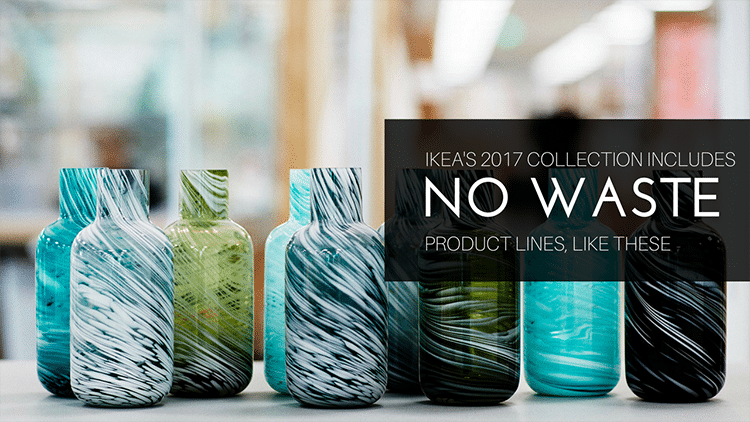For many of us, sustainability is no longer just a good idea – it’s a matter of self-preservation. Tourism is hit particularly hard by changes in climate, particularly in regions where weather is a major driver for tourists.
Recently, a popular ski camp shuttered in Whistler, BC after nearly 30 successful years. As its founders explained on Facebook, Whistler’s Horstman glacier has lost too much ice to maintain the jumps and runs its campers expect — even after a record-breaking winter snowfall. In one year alone, the glacier lost an irreplaceable 35 vertical feet of ice.
In regions that are less wealthy and less insulated from the impact, the situation can be even more dire. The islands of Vanuatu have supported a small but healthy tourism industry. Now, sea-level rise, coastal erosion and extreme weather threaten not just tourism — which is a significant sector of the island economy — but also access to necessities like food, water and shelter.
These seismic shifts are going to change the face of global tourism, and they’re also changing priorities for businesses. For many, “going green” is an insufficient half measure when the stakes are so high and so personal. Embracing sustainability as a core value is an increasingly popular alternative.
What are core values?
Core values drive every major decision your company makes, whether you’re aware of it or not. When weighing all the factors that go into a decision, we consciously or subconsciously assign higher weights to things that fit our core values. So if “Profit” is a core value for your company, you’ll prefer solutions that lead directly to more money coming in, or less money going out.
But when we fail to define our core values, we end up serving goals we don’t intend. Profit is good, but it’s generally best when tempered by values like growth and ethical business practices. Similarly, environmental sustainability might not be immediately profitable, but it may provide long-term value that’s worth prioritizing. By defining core values clearly, we can turn a passive process into an active part of decision making.
Want to define your company’s core values? Start here.
Sustainability is big business
If sustainability is one of your core values, you’re in good company. Businesses around the world have embraced the environmental and financial benefits sustainable practices bring. Companies as large as Apple, Coca-Cola and IKEA have gone leaps and bounds beyond what any government regulations require — not only because it’s best for the planet, but because it’s necessary for their bottom line.
In fact, that may be the biggest myth about environmental sustainability: that it’s massively more expensive than the alternative. In reality, companies are finding that the only financially responsible move is to get away from using non-renewables and unsustainable business practices. That’s Economics 101: if a resource is going to run out, it’s going to be a lot more expensive before it does.
IKEA was once known for nothing more than affordable and disposable furniture. How did it go from that to becoming a corporate sustainability leader?
It wasn’t easy, but neither was it a grueling process. Instead, the company embraced the challenge of turning a multi-billion dollar, international company into a sustainable business as a creative opportunity.
Changes vary by country, based on needs, opportunities and local laws. It invests in renewable energy sources like wind and solar wherever it can, with the goal of becoming energy self-sufficient. It finds creative ways to zero its waste stream — in the UK, this has even been a profitable endeavor. It works with employees to build a culture of sustainability within the company, and invests in helping them make their own lives and homes more sustainable. It’s transitioning food service toward plant-based products, uses cardboard and other waste in its product lines, and reevaluates popular products to find new, more efficient solutions. It’s also been investing in its own supply chain, helping to move suppliers over to renewables.
IKEA’s chief sustainability officer Steve Howard explained the company’s aggressive sustainability push at a climate conference in London.
His argument was that for businesses setting 90 percent targets, for example, many staff and colleagues instinctively will try to be part of the remaining 10 percent to preserve the status quo. Meanwhile, setting even lower targets of around 50 percent — or as Howard put it, saying “we’re not going to be half as bad as we are today” — is not very aspirational and leaves everybody “completely confused.”
“You’ve not declared what success looks like,” Howard said. “If you set 100 percent targets, immediately you stop all research and development in historical technologies, products or services and you put all of your efforts into looking at the future.”
Where to start
So if you want to follow in the footsteps of these giants, where do you begin? The options are almost endless, after all. To narrow it down, look to the experts. Travelife, an organization that certifies sustainable businesses in the travel industry, identifies five key areas where the most improvement can be made:
- Office operations, by e.g. saving paper and energy resources, and complying to best labour practices.
- Product development, by integrating sustainability principles in the selection process of providers (e.g. accommodations, transport companies, excursions).
- Working with providers, by supporting and motivating existing partners towards sustainability with, for example, training, information and incentives.
- Customer relations, by creating awareness and responsible choices through for example information and codes of conduct.
- Destinations, by supporting destination stakeholders’ efforts to address sustainability issues, and financially contributing to conservation and development projects.
Those points are listed in a loose priority order. First, you need to have your internal operations and product development headed in a more sustainable direction. That gives you the authority you’ll need to encourage providers and customers toward more sustainable practices.
What might sustainable operations look like for your company? Canadian ski resort Whistler Blackcomb might provide a good example. With glacier ice reduction threatening the resort’s future, it’s made environmental sustainability a core part of its mission. It’s goal? A Zero Operating Footprint.
For Whistler Blackcomb, that means two major endeavors: reaching zero waste, and offsetting 100 percent of its energy use.
Whistler glacier. Source: Ruth Hartnup
The resort streamlined its waste management operations, diverted more waste to recycling, compost, or reuse, and started minimizing packaging and other wasteful practices. As a result, Whistler Blackcomb has reached a point where 60 percent of its waste is diverted from the landfill. It’s still working toward that zero waste goal, with regular auditing and a clear plan to get there.
To offset its energy use, Whistler Blackcomb worked with local energy providers to install a micro hydro renewable energy plant. Several years after starting operations, it returns an equivalent of the resort’s annual demand to the grid. Whistler Blackcomb reports that its sustainability programs have resulted in $1,000,000 in annual savings and increased employee and guest satisfaction.
Diverting waste and reducing or offsetting energy use are two worthwhile endeavors, but they aren’t the only ways to make your business more sustainable. As part of its International Year of Sustainable Tourism for Development, the United Nations World Tourism Organization highlighted five ways tourism can contribute to sustainability:
- Inclusive and sustainable economic growth
- Social inclusiveness, employment and poverty reduction
- Resource efficiency, environmental protection and climate change
- Cultural values, diversity and heritage
- Mutual understanding, peace and security
Reducing our environmental impact is just one part of securing a sustainable future for everyone. Whatever your goals, strong leadership and a supportive organizational culture will go a long way to helping you reach them.
Communicating your goals
When it comes to activism-based values, communication can be almost as important as action.
Look at a company like Ben & Jerry’s. Despite its focus on product — tasty, rich ice cream — its fans know it a brand with a progressive political agenda. That brand positioning isn’t a happy accident, or the result of a few pro-environment carton labels (though that’s part of it). It’s the result of a lot of hard, sometimes frustrating work.
Over time, Ben & Jerry’s transformed its business to support its core value of “linked prosperity” at all levels, from its choice of providers to its philanthropic efforts. The company communicates its values constantly: in its marketing, in annual environmental reports, in its business practices as a B Corp, and its social outreach. Because it takes on this authentic, “inside the pint, out” effort, consumers embrace the messaging. And for Ben & Jerry’s, that messaging is part of the work, too. By inviting customers to be part of their efforts, they encourage customers toward similar types of activism in a way that a quiet sustainability plan couldn’t achieve.
And that same ethos can serve your tour or activity company. For example, one of the most important rules of any excursion into the natural world is to leave the environment in better shape than you found it. By encouraging guests to embrace that standard through your own words and actions, you create a ripple effect. Some of your guests will carry that tradition forward in their own lives, protecting other regions around the world, and the places their companions visit, and their children, and on and on.
Curious about B Corps? Need some guidance to better align your company’s practices to sustainable values? Check out these sustainability resources.
Adopting sustainability as a core value isn’t easy, and the benefits aren’t always immediately apparent. But with careful planning and implementation, your company can be more sustainable, more profitable, and more popular — and will help create a better future in the process.







